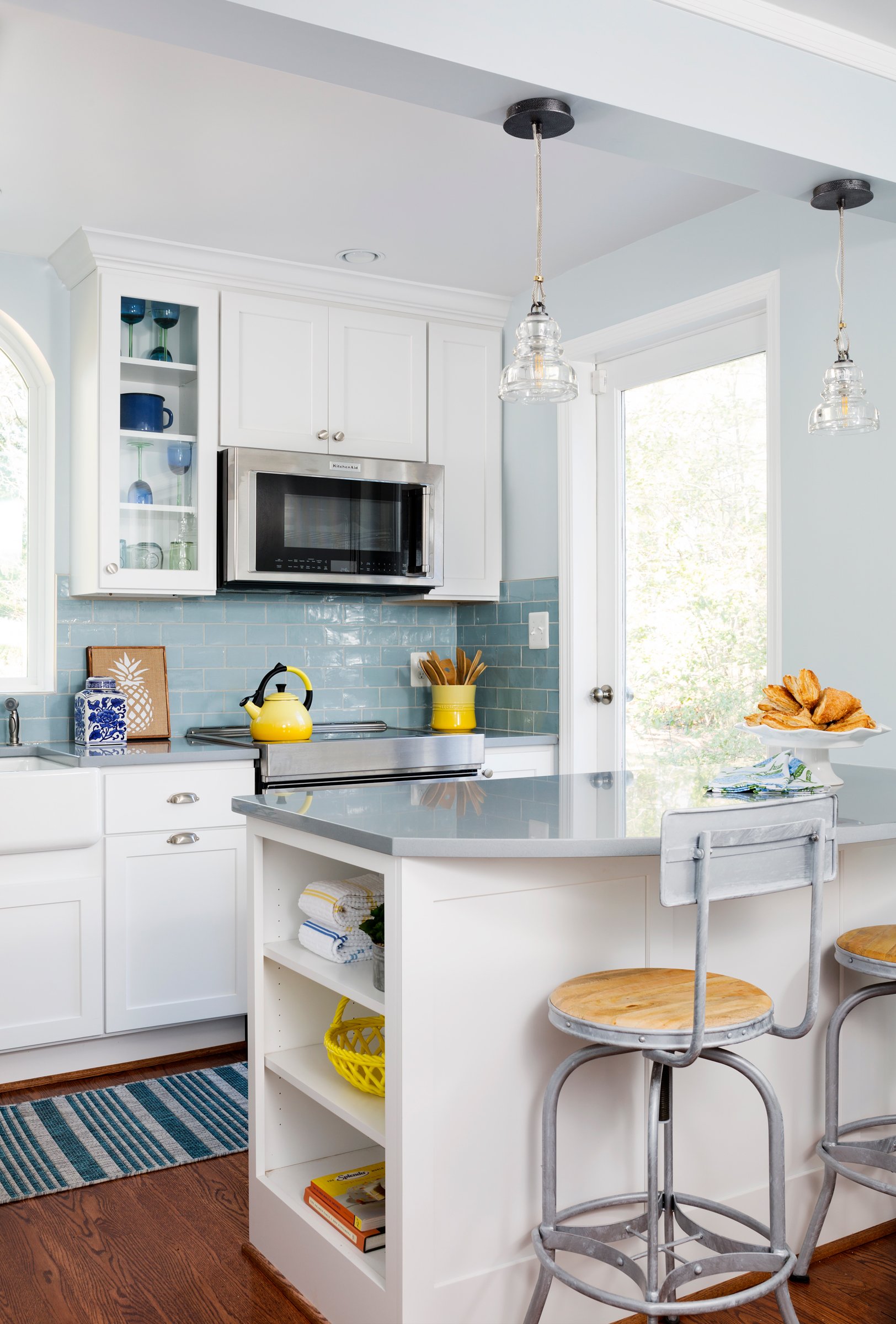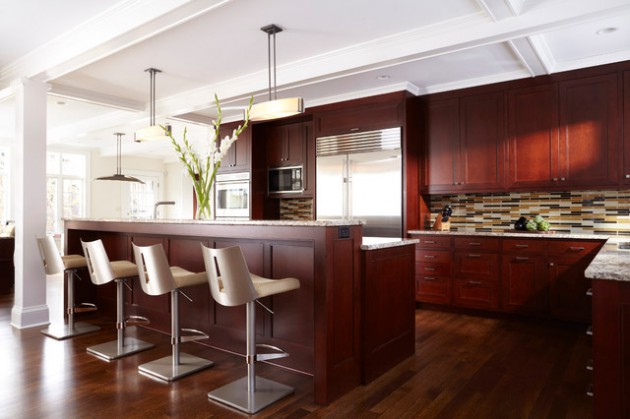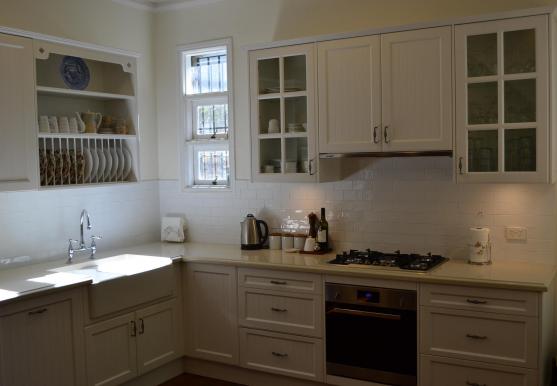Designing your kitchen cabinets is one of the most crucial aspects of creating a functional and aesthetically pleasing kitchen. Kitchen cabinets are not only essential for storage but also serve as a key visual element that can set the tone for the entire space. The process of designing your kitchen cabinets involves several important decisions, from choosing the right materials and finishes to determining the layout and organization of the cabinets. Thoughtful design can transform your kitchen into a space that is both beautiful and highly functional, tailored to your specific needs and preferences.
One of the first steps in designing your kitchen cabinets is to consider the overall layout of your kitchen. The layout determines how the cabinets will be arranged and how they will interact with other elements in the kitchen, such as appliances, countertops, and the sink. Common kitchen layouts include the U-shape, L-shape, galley, and island layouts, each offering different advantages in terms of space utilization and workflow. When designing your cabinets, it’s important to consider how they will fit into the chosen layout and how they can optimize storage and accessibility in the kitchen.

The material you choose for your kitchen cabinets plays a significant role in both the look and durability of the cabinets. Wood is a popular choice for kitchen cabinets due to its timeless appeal and versatility. There are various types of wood to choose from, including oak, maple, cherry, and walnut, each offering different grain patterns and finishes. In addition to solid wood, engineered wood products like plywood and MDF (medium-density fiberboard) are also commonly used in cabinet construction. These materials offer cost-effective alternatives to solid wood and can be finished with a veneer or laminate to achieve the desired look.
The style of your kitchen cabinets is another important consideration. Cabinet style encompasses the design of the cabinet doors, the type of hardware used, and the overall aesthetic of the cabinets. Popular cabinet styles include traditional, shaker, and contemporary. Traditional cabinets often feature ornate details and raised panel doors, while shaker cabinets are known for their simple, clean lines and recessed panel doors. Contemporary cabinets, on the other hand, are characterized by sleek, flat-panel doors and minimalist hardware. When choosing a style, it’s important to consider the overall design theme of your kitchen and how the cabinets will complement other elements in the space.

Cabinet finishes can dramatically affect the appearance of your kitchen cabinets. The finish refers to the final coating applied to the cabinets, which can be paint, stain, or a clear coat. Painted cabinets offer a smooth, opaque finish and can be customized in virtually any color to match your kitchen’s color scheme. Stained cabinets, on the other hand, allow the natural grain of the wood to show through, adding warmth and texture to the space. A clear coat can be applied over natural wood or stained cabinets to protect the surface and enhance the wood’s natural beauty. The finish you choose will impact the overall look and feel of your kitchen, so it’s important to select one that aligns with your design vision.
The functionality of your kitchen cabinets is just as important as their appearance. To maximize the utility of your cabinets, it’s essential to consider how they will be organized and what types of storage solutions they will include. For example, pull-out shelves, lazy Susans, and deep drawers can make it easier to access items stored in the back of the cabinets, while built-in organizers can help keep utensils, pots, and pans neatly arranged. Additionally, consider the placement of your cabinets in relation to your kitchen appliances and work areas to ensure a smooth workflow. By prioritizing functionality in your cabinet design, you can create a kitchen that is both efficient and enjoyable to use.

Incorporating custom features into your kitchen cabinets can enhance both their functionality and aesthetic appeal. Custom cabinets offer the opportunity to tailor every aspect of the design to your specific needs, from the size and shape of the cabinets to the type of hardware and finishes used. For example, if you have an irregularly shaped kitchen or specific storage requirements, custom cabinets can be designed to fit perfectly into the space and accommodate your needs. Additionally, custom cabinets can include unique features like glass-front doors, open shelving, or built-in lighting, adding a touch of personality and style to your kitchen.
The hardware you choose for your kitchen cabinets can have a significant impact on their overall look and functionality. Hardware includes the handles, knobs, and pulls used to open and close the cabinet doors and drawers. The style, material, and finish of the hardware should complement the design of the cabinets and the overall theme of your kitchen. For example, sleek, stainless steel handles are a popular choice for modern kitchens, while ornate, antique brass knobs can add a touch of elegance to traditional cabinets. In addition to style, consider the ergonomics of the hardware—make sure it is comfortable to use and easy to grip.
Lighting is another important consideration when designing your kitchen cabinets. Proper lighting can enhance the functionality of your kitchen by illuminating work areas and making it easier to see inside the cabinets. There are several types of lighting to consider, including under-cabinet lighting, in-cabinet lighting, and overhead lighting. Under-cabinet lighting is particularly useful for task lighting, as it provides direct illumination to the countertops. In-cabinet lighting, such as LED strips or puck lights, can be installed inside glass-front cabinets to highlight decorative items or make it easier to find items stored inside. By incorporating lighting into your cabinet design, you can create a bright and inviting kitchen environment.

The height and depth of your kitchen cabinets are important factors that influence both their appearance and functionality. Standard upper cabinets are typically 12 to 15 inches deep and 30 to 42 inches high, while lower cabinets are usually 24 inches deep and 34.5 inches high. However, these dimensions can be adjusted to suit your specific needs and preferences. For example, taller upper cabinets can provide additional storage space, while deeper lower cabinets can accommodate larger pots and pans. It’s also important to consider the height of the cabinets to the ceiling and countertops to ensure a balanced and cohesive look in your kitchen.
The color of your kitchen cabinets can have a significant impact on the overall look and feel of your kitchen. Neutral colors like white, gray, and beige are popular choices for kitchen cabinets, as they create a clean and timeless look that can easily be updated with new hardware or accessories. However, bold colors like navy blue, forest green, or deep red can also make a statement and add personality to your kitchen. When choosing a color for your cabinets, consider the overall color scheme of your kitchen and how the cabinets will coordinate with the walls, countertops, backsplash, and flooring. Additionally, think about how the color will look in different lighting conditions and how it will affect the perceived size of your kitchen.
The type of cabinet door you choose is another important decision in the design process. Cabinet doors come in a variety of styles, including full-overlay, partial-overlay, inset, and frameless. Full-overlay doors cover the entire face of the cabinet box, creating a seamless look, while partial-overlay doors leave a portion of the cabinet frame visible. Inset doors are set inside the cabinet frame, providing a classic, flush appearance, while frameless doors offer a sleek, modern look with minimal gaps between the doors and drawers. The style of door you choose will influence the overall appearance of your cabinets and should complement the design theme of your kitchen.
The interior organization of your kitchen cabinets is crucial for maximizing storage and maintaining a clutter-free kitchen. There are numerous organizational solutions available, from pull-out pantry shelves and spice racks to cutlery trays and corner carousels. When designing your cabinets, think about how you use your kitchen and what items you need to store. For example, if you do a lot of baking, you might want to include deep drawers for storing mixing bowls and baking sheets, as well as pull-out shelves for easy access to ingredients. If you have a large collection of pots and pans, consider adding a pot rack or pull-out drawers to keep them organized and easily accessible.

The placement of your kitchen cabinets about other elements in the kitchen is critical for creating a functional and efficient workspace. When designing your cabinets, consider the “kitchen work triangle,” which is the relationship between the sink, stove, and refrigerator. Ideally, these three elements should be positioned in a triangular layout to minimize the distance between them and create a smooth workflow. Additionally, think about how the placement of your cabinets will affect traffic flow in the kitchen. For example, avoid placing cabinets in areas where they might obstruct movement or create bottlenecks during busy times.
The budget for your kitchen cabinet design is an important factor to consider. The cost of kitchen cabinets can vary widely depending on the materials, finishes, and custom features you choose. It’s important to establish a budget early in the design process and prioritize the elements that are most important to you. For example, if you’re working with a limited budget, you might choose to invest in high-quality, durable materials for the cabinet boxes and opt for more affordable finishes or hardware. Alternatively, you could consider semi-custom cabinets, which offer a balance between cost and customization. By carefully planning your budget, you can create a beautiful and functional kitchen without overspending.
The timeline for your kitchen cabinet design and installation is another important consideration. Depending on the complexity of the design and whether you choose stock, semi-custom, or custom cabinets, the process can take anywhere from a few weeks to several months. It’s important to plan and allow enough time for each stage of the process, from initial design consultations to final installation. Additionally, consider the impact that the cabinet installation will have on your daily routine, and plan for any disruptions that might occur during the renovation process. By establishing a clear timeline and working closely with your contractor, you can ensure that your kitchen cabinet design project stays on track and is completed to your satisfaction.
The environmental impact of your kitchen cabinet design is another factor to consider. If sustainability is important to you, look for eco-friendly materials and finishes that minimize the environmental impact of your cabinets. For example, consider using cabinets made from sustainable wood or engineered wood products that are certified by organizations like the Forest Stewardship Council (FSC). Additionally, choose low-VOC (volatile organic compound) finishes and adhesives to reduce indoor air pollution and create a healthier kitchen environment. By making environmentally conscious choices, you can design kitchen cabinets that are not only beautiful and functional but also contribute to a more sustainable future.

Common Mistakes to Avoid
One common mistake in kitchen cabinet design is failing to plan for enough storage. It’s easy to focus on the aesthetics of the cabinets and overlook the practical aspects of storage. To avoid this mistake, take the time to assess your storage needs and ensure that your cabinets include enough space for all of your kitchen essentials.
Another mistake is not considering the workflow in the kitchen. Poor cabinet placement can lead to an inefficient and frustrating kitchen layout. To avoid this, consider the kitchen work triangle and make sure your cabinets are positioned to facilitate a smooth workflow. Additionally, many homeowners make the mistake of choosing cabinet materials and finishes based solely on appearance without considering their durability and maintenance requirements. It’s important to choose materials that are not only visually appealing but also durable and easy to maintain.
Another common mistake is overlooking the importance of lighting. Proper lighting is essential for both the functionality and ambiance of the kitchen. Failing to incorporate adequate lighting into your cabinet design can result in a dim and uninviting kitchen space. Consider under-cabinet lighting, in-cabinet lighting, and task lighting to enhance the functionality and appearance of your kitchen.
Additionally, some homeowners make the mistake of choosing trendy cabinet designs that may quickly go out of style. While it’s important to incorporate your style into the design, it’s also wise to choose a timeless cabinet style that will stand the test of time. Finally, attempting to install kitchen cabinets without professional help is a common mistake that can lead to poor results. Professional installation ensures that the cabinets are properly fitted and aligned, resulting in a polished and professional finish.

How do I choose the right materials for my kitchen cabinets?
Choosing the right materials for your kitchen cabinets depends on factors such as your budget, design preferences, and the level of durability you need. Solid wood is a popular choice for its timeless appeal and durability, but it can be more expensive than engineered wood products like plywood or MDF. Plywood offers a good balance of strength and affordability, while MDF is often used for its smooth surface and resistance to warping. Consider how the material will perform in your kitchen environment, as well as how it will look with your chosen finish. Consulting with a professional can help you make an informed decision based on your specific needs.
What cabinet style is best for a modern kitchen?
For a modern kitchen, sleek and minimalist cabinet styles are often the best choice. Flat-panel or slab cabinet doors with simple, clean lines are a hallmark of modern design. Frameless cabinets, also known as European-style cabinets, are another popular choice for modern kitchens due to their seamless appearance and efficient use of space. In terms of materials, consider high-gloss finishes, glass inserts, or metal accents to enhance the modern aesthetic. The hardware should also be simple and understated, with handles and pulls that complement the overall design without drawing too much attention.
How do I maximize storage in my kitchen cabinets?
To maximize storage in your kitchen cabinets, consider incorporating organizational solutions such as pull-out shelves, deep drawers, and built-in organizers. Pull-out shelves make it easier to access items stored at the back of the cabinets, while deep drawers can accommodate larger items like pots and pans. Built-in organizers, such as cutlery trays, spice racks, and dividers, help keep your kitchen essentials neatly arranged and easily accessible. Additionally, consider the use of vertical space by installing taller upper cabinets or adding shelves inside the cabinets. Custom cabinets can also be designed to fit specific storage needs, providing a tailored solution for your kitchen.

What is the best way to clean and maintain kitchen cabinets?
The best way to clean and maintain kitchen cabinets depends on the material and finish of the cabinets. For most cabinets, a soft cloth dampened with mild soap and water is sufficient for regular cleaning. Avoid using harsh or abrasive cleaners that could damage the finish. For wood cabinets, it’s important to periodically check for signs of wear, such as scratches or fading, and touch up the finish as needed. Painted cabinets may require occasional repainting to maintain their appearance. Regularly dusting the cabinets and wiping up spills immediately can help prevent buildup and keep your cabinets looking their best.
Can I mix different cabinet styles in one kitchen?
Yes, mixing different cabinet styles in one kitchen can create a unique and personalized look. However, it’s important to do so thoughtfully to ensure that the overall design remains cohesive. For example, you might choose one style for the upper cabinets and a different style for the lower cabinets, or use contrasting colors or finishes to create visual interest. When mixing cabinet styles, consider the overall design theme of your kitchen and how the different elements will work together. It’s also a good idea to maintain some consistency in terms of materials and hardware to tie the different styles together.
How much should I budget for kitchen cabinets?
The cost of kitchen cabinets can vary widely depending on factors such as the materials, finishes, and level of customization you choose. Stock cabinets are the most affordable option, with prices typically ranging from $100 to $300 per linear foot. Semi-custom cabinets offer more design flexibility and can range from $150 to $650 per linear foot. Custom cabinets are the most expensive option, with prices starting at $500 per linear foot and going up from there. When budgeting for kitchen cabinets, it’s important to factor in the cost of installation, as well as any additional features or accessories you may want to include. By establishing a budget early in the design process, you can make informed decisions that align with your financial goals.

Remodeling Budget Kitchen Cabinets
Classy Kitchen Cabinets Made Out Of Cherry Wood

Related Posts:
- Reface Kitchen Cabinets Hillington
- Used Kitchen Cabinets For Sale In Barrie
- Teak Finish Kitchen Cabinets
- How To Stain Your Kitchen Cabinets
- Tall Kitchen Cabinet With Shelves
- How To Dismantle Kitchen Cabinets
- Dark Taupe Kitchen Cabinets
- Battery Led Strip Lights For Under Kitchen Cabinets
- White Kitchen Cabinets Pros And Cons
- Single Sink Kitchen Base Cabinet